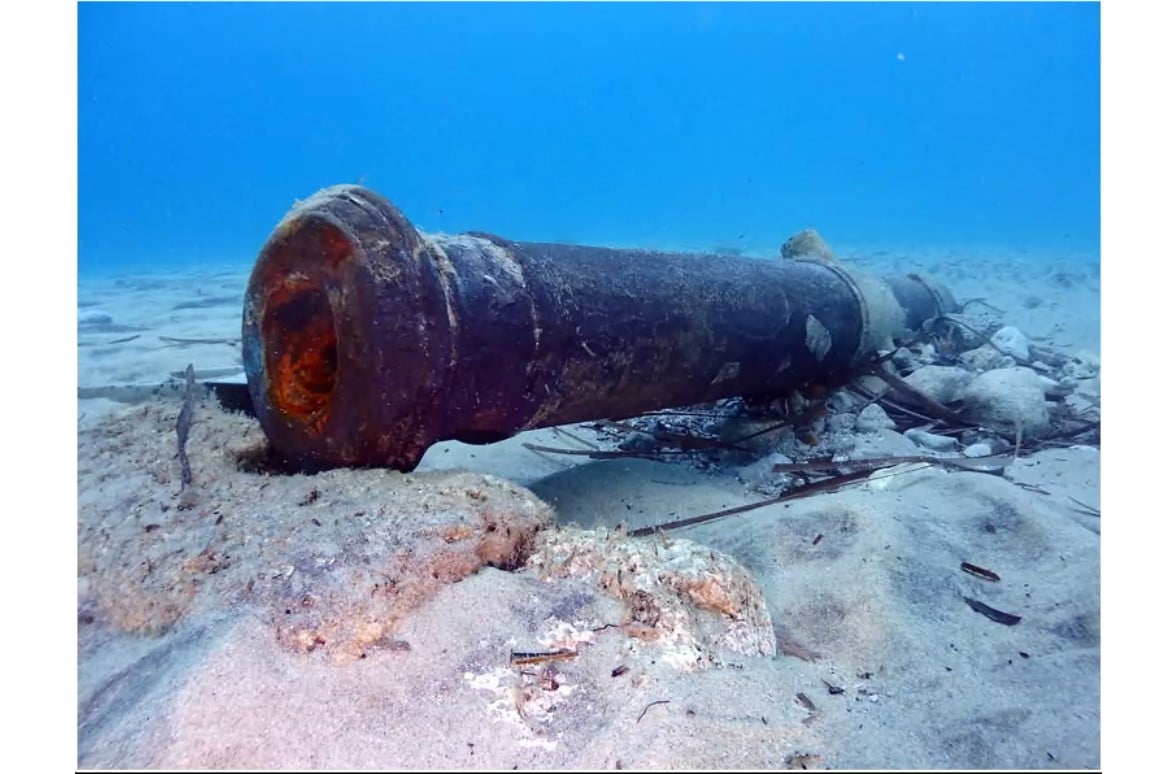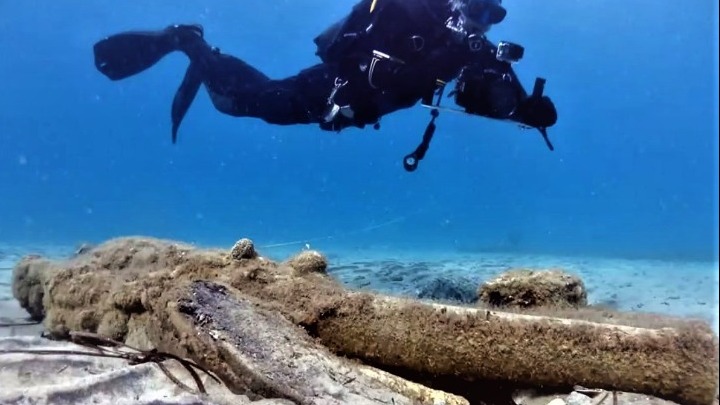
A shipwreck believed to be connected to the Greek War of Independence in 1821-1829 was discovered off the coast of Halkidiki, northern Greece.
In its wooden hull two cannons and a one-and-a-half-meter-long rifle, called kariofili, which was widely used by Greek revolutionaries, were also discovered.
The shipwreck is about 80 meters from the shore of the village of Furka and at a depth of four meters. The ship’s wooden hull is estimated to be 25 meters long and eight wide.

Two cannons and a rifle are among findings of the shipwreck in Greece
Of great interest were the two cannons found in good condition, 1.65 and 1.86 meters long respectively, as well as the kariofili, which has decorative elements and exceeds one and a half meters in length.

The shipwreck was discovered alongside portable materials, bricks, concrete blocks, car tires and even a television screen that local residents said ended up there during the floods of the past few decades.
A modern ladder was also found, which apparently was used in a failed attempt to remove the cannons from the bottom of the sea.
Research on the shipwreck is carried out by archaeologists S. Vrachionidou and A. Tourta.
According to them, the research is at an early stage, but the wreck probably belongs to the revolutionary period and dates back to the late 18th and early 19th centuries.
It is also possible that the ship itself played a role in the Greek Revolution, specifically the revolt in Halkidiki, spearheaded by Emmanuel Papas, who carried food to bolster the revolutionaries.
Evidence for the identity of the ship is provided by the findings of the wreck, which include, among others, ropes and sails, clay and metal vessels, a copper pan, a glass bottle with its cork, fragments of porcelain cups, a wooden basket, a broken sack and a bronze inkpot.
The research and study of the material will continue, while underwater excavation will highlight the area and illuminate the role of the wrecked vessel in the not so well known revolution of 1821 in Macedonia.
See all the latest news from Greece and the world at Greekreporter.com. Contact our newsroom to report an update or send your story, photos and videos. Follow GR on Google News and subscribe here to our daily email!



